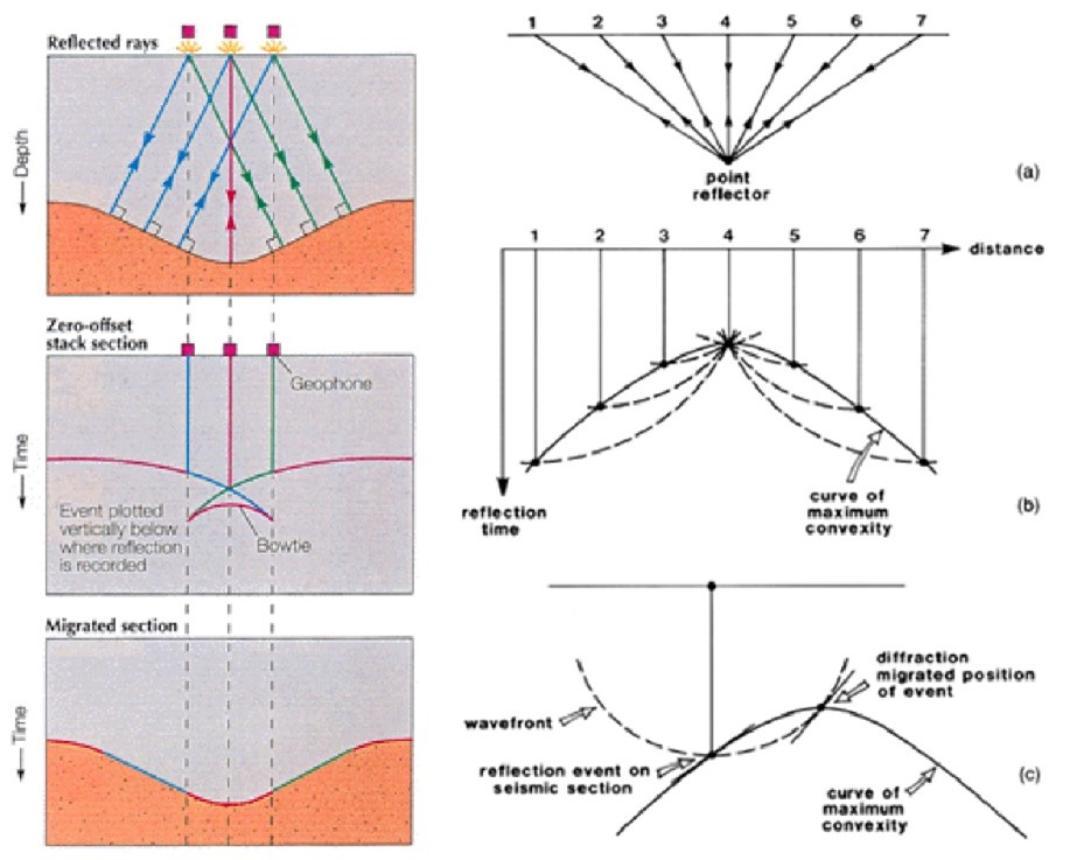The Devil is in the Details

Guillaume share some thoughts about geophysical data and seismic artefacts
What do we really know about the sub-seabed? Not much…
In this quest for information, we acquire ground-truthing by drilling holes or sampling cores. But nowadays, we also rely on geophysical data, herein seismic, to explore and describe sub-seabed sediment and bedrock units.
Seismic profiles are an indirect representation of the sub-seabed. The concept of seismic reflection is to highlight impedance contrasts (e.g. from unit boundaries, layers or even differences in physical properties) (Lurton, 2002). Depending on the acquisition system and its complexity, creating an image requires numerous steps of data processing (Yilmaz, 2001). Such processing aims to minimize the geometric deformation of the layers and remove most of the artefacts.
Within the framework of the I-MORE project, the exploration of a significant seismic dataset from different sources and different acquisition systems led to several artefacts. These artefacts notably include diffraction hyperbola and bowtie artefacts (Kearey et al., 2002; Yilmaz, 2001). While hyperbolas are associated with a diffraction point, bowtie artefacts are related to an object's deformed geometrical representation.

Figure 2: Illustration (left) of bowtie artefacts with the real geometry of the reflector and its representation as an artefact. On the right, diffraction hyperbola, with (a) reflection paths from a point reflector, (b) migration of individual reflection events back to a position of point reflector and (c) Use of wavefront chart and curve of maximum convexity to migrate a specific reflection event (Kearey et al., 2002).
Other artefacts from the seismic dataset explored within the I-MORE project have also been evidenced on the Sparker lines, such as bubble noise and ghost reflectors. With external seismic sources (e.g. Sparker, air-gun, water gun, etc.), the bubble noise is related to the oscillation of the gas bubble after cavitation. This type of artefact is usually attenuated by applying noise filters to the data. The last kind of artefact, the ghost reflection (see also here) has created some issues during the interpretation of shallow seismic units. Ghost reflectors are related to the seismic acquisition setting and the reflection of the seismic wave onto the above sea surface. This reflection creates a lag in the propagation of the seismic wave, which later develops a ghost reflector (Robinson & Treitel, 2008). The depth of the ghost reflector notably depends on the depth of the seismic streamer. During Guillaume's interpretation, this ghost reflector was confounded with a seismic reflector because it merged with a seismic boundary. By looking in detail, the seismic signal exhibited a reversed polarity, which is typical of a ghost reflector (Yilmaz, 2001). Since, by adjusting the picking of the seismic horizon, the real seismic surface has been picked correctly.

Figure 3: Section of Sparker seismic line displaying diffraction artefacts and a reflector with apparent reversed polarity, interpreted as a ghost reflector.
These thoughts about seismic artefacts only scratch the surface of the seismic artefact topic. However, it aims to show that details hiding within these artefacts are important to consider.
If you want to learn more about seismic artefacts, several websites are easily accessible:
- https://glossary.oilfield.slb.com/en/terms
- https://wiki.seg.org/wiki/
and for some more complex explanations, here are the references :
Kearey, P., Brooks, M., & Hill, I. (2002). An Introduction to Geophysical Exploration. Wiley. https://books.google.fr/books?id=yj7CMOMvxnMC
Lurton, X. (2002). An introduction to underwater acoustics: principles and applications. Springer Science & Business Media.
Robinson, E. A., & Treitel, S. (2008). Digital imaging and deconvolution: The ABCs of seismic exploration and processing. Society of Exploration Geophysicists.
Yilmaz, Ö. (2001). Seismic data analysis: Processing, inversion, and interpretation of seismic data. Society of Exploration Geophysicists.
Marine Geosciences Research Group
University College Cork
Contact us
School of Biological, Earth and Environmental Sciences, North Mall Campus, University College Cork, North Mall, Cork City, T23 TK30
